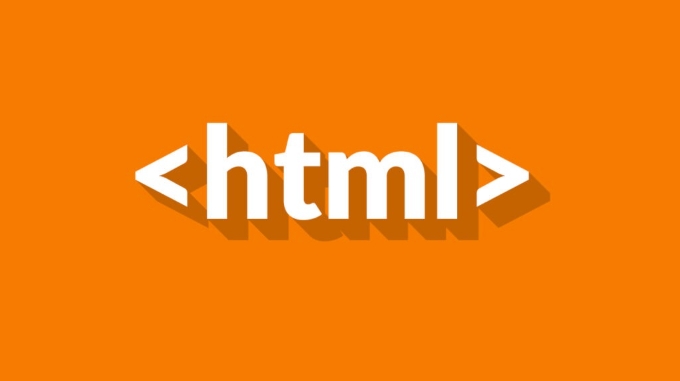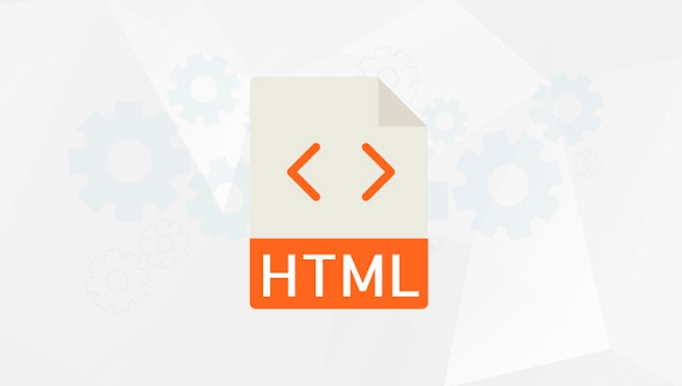 Web Front-end
Web Front-end
 HTML Tutorial
HTML Tutorial
 What are the srcset and sizes html attributes for responsive images?
What are the srcset and sizes html attributes for responsive images?
What are the srcset and sizes html attributes for responsive images?
Jun 26, 2025 am 01:21 AMTo build responsive websites, developers should use the srcset and sizes HTML attributes to serve optimized images based on device conditions. 1. The srcset attribute allows defining multiple image sources with width or pixel density descriptors, enabling the browser to select the most appropriate image based on screen size and resolution. 2. The sizes attribute complements srcset by informing the browser how much space the image will occupy under different layout conditions, ensuring accurate image selection. 3. Best practices include providing a fallback src attribute, using consistent units, avoiding excessive image variations, testing across devices and network speeds, and automating image resizing when possible. 4. A common mistake is misusing sizes="100vw" even when the image doesn’t fill the screen, which can degrade performance. Together, srcset and sizes improve page speed and user experience, especially on mobile devices, without requiring JavaScript or complex server logic.

When building responsive websites, developers often face the challenge of serving the right image size to different devices. This is where srcset and sizes HTML attributes come into play. They help browsers choose the best image source based on screen size, resolution, and layout context — without relying on JavaScript or complex server logic.

What srcset Does
The srcset attribute lets you define multiple image sources for different device conditions. It's usually placed inside an <img src="/static/imghw/default1.png" data-src="https://img.php.cn/upload/article/000/000/000/175087206657654.jpeg" class="lazy" alt="What are the srcset and sizes html attributes for responsive images?" > tag and lists several image URLs along with their width descriptors (w) or pixel density descriptors (x).

For example:
<img src="/static/imghw/default1.png" data-src="image-small.jpg" class="lazy"
srcset="image-small.jpg 480w,
image-medium.jpg 800w,
image-large.jpg 1200w"
alt="A responsive image">Here’s how it works:

- The browser checks the available space for the image on the page.
- It also considers the device's screen resolution.
- Then it picks the most appropriate image from the list in
srcset.
If you're targeting high-resolution screens like Retina displays, you can use pixel density descriptors instead:
srcset="image-normal.jpg 1x, image-retina.jpg 2x"
This tells the browser to load image-retina.jpg on high-density screens.
How sizes Helps the Browser Decide
While srcset provides alternative images, the sizes attribute tells the browser how much space the image will take up on the screen under different conditions. This helps it pick the best-fit image from the srcset list.
Without sizes, the browser has to guess how big the image will be, which might lead to poor choices — like loading a huge image on a mobile screen.
Here's an example:
<img src="/static/imghw/default1.png" data-src="image-small.jpg" class="lazy"
srcset="image-small.jpg 480w,
image-medium.jpg 800w,
image-large.jpg 1200w"
sizes="(max-width: 600px) 100vw,
(max-width: 900px) 50vw,
33vw"
alt="Responsive image with sizes">Let’s break down what this means:
- On screens narrower than 600px, the image takes up the full viewport width (
100vw). - Between 600px and 900px, it uses half the viewport (
50vw). - On larger screens, it uses one-third of the viewport (
33vw).
With this info, the browser can better match the image size to the actual layout needs.
Practical Tips When Using srcset and sizes
-
Always include a
srcattribute as a fallback for older browsers that don’t supportsrcset. -
Use consistent units when listing widths in
srcsetand sizes insizes. Mixingpx,%, andvwcarelessly can confuse the browser. - Test your setup across different screen sizes and network speeds. Tools like Chrome DevTools' Network panel let you simulate slower connections and see how image loading behaves.
- Don't overdo it. Providing too many image variations adds complexity but may not improve performance significantly.
- Automate image resizing using tools or CMS features if possible. Manually creating multiple versions of every image isn’t sustainable.
One common mistake is setting sizes to "100vw" all the time, even when the image doesn’t actually span the full viewport. That can trick the browser into choosing a larger image than needed, slowing things down unnecessarily.
Wrapping Up
Using srcset and sizes together gives you more control over how images behave across devices. It's not magic, but it does make a noticeable difference in performance and user experience — especially on mobile. Once you understand how they work together, implementing them becomes straightforward.
The above is the detailed content of What are the srcset and sizes html attributes for responsive images?. For more information, please follow other related articles on the PHP Chinese website!

Hot AI Tools

Undress AI Tool
Undress images for free

Undresser.AI Undress
AI-powered app for creating realistic nude photos

AI Clothes Remover
Online AI tool for removing clothes from photos.

Clothoff.io
AI clothes remover

Video Face Swap
Swap faces in any video effortlessly with our completely free AI face swap tool!

Hot Article

Hot Tools

Notepad++7.3.1
Easy-to-use and free code editor

SublimeText3 Chinese version
Chinese version, very easy to use

Zend Studio 13.0.1
Powerful PHP integrated development environment

Dreamweaver CS6
Visual web development tools

SublimeText3 Mac version
God-level code editing software (SublimeText3)
 Applying Semantic Structure with article, section, and aside in HTML
Jul 05, 2025 am 02:03 AM
Applying Semantic Structure with article, section, and aside in HTML
Jul 05, 2025 am 02:03 AM
The rational use of semantic tags in HTML can improve page structure clarity, accessibility and SEO effects. 1. Used for independent content blocks, such as blog posts or comments, it must be self-contained; 2. Used for classification related content, usually including titles, and is suitable for different modules of the page; 3. Used for auxiliary information related to the main content but not core, such as sidebar recommendations or author profiles. In actual development, labels should be combined and other, avoid excessive nesting, keep the structure simple, and verify the rationality of the structure through developer tools.
 Implementing Clickable Buttons Using the HTML button Element
Jul 07, 2025 am 02:31 AM
Implementing Clickable Buttons Using the HTML button Element
Jul 07, 2025 am 02:31 AM
To use HTML button elements to achieve clickable buttons, you must first master its basic usage and common precautions. 1. Create buttons with tags and define behaviors through type attributes (such as button, submit, reset), which is submitted by default; 2. Add interactive functions through JavaScript, which can be written inline or bind event listeners through ID to improve maintenance; 3. Use CSS to customize styles, including background color, border, rounded corners and hover/active status effects to enhance user experience; 4. Pay attention to common problems: make sure that the disabled attribute is not enabled, JS events are correctly bound, layout occlusion, and use the help of developer tools to troubleshoot exceptions. Master this
 Configuring Document Metadata Within the HTML head Element
Jul 09, 2025 am 02:30 AM
Configuring Document Metadata Within the HTML head Element
Jul 09, 2025 am 02:30 AM
Metadata in HTMLhead is crucial for SEO, social sharing, and browser behavior. 1. Set the page title and description, use and keep it concise and unique; 2. Add OpenGraph and Twitter card information to optimize social sharing effects, pay attention to the image size and use debugging tools to test; 3. Define the character set and viewport settings to ensure multi-language support is adapted to the mobile terminal; 4. Optional tags such as author copyright, robots control and canonical prevent duplicate content should also be configured reasonably.
 Best HTML tutorial for beginners in 2025
Jul 08, 2025 am 12:25 AM
Best HTML tutorial for beginners in 2025
Jul 08, 2025 am 12:25 AM
TolearnHTMLin2025,chooseatutorialthatbalanceshands-onpracticewithmodernstandardsandintegratesCSSandJavaScriptbasics.1.Prioritizehands-onlearningwithstep-by-stepprojectslikebuildingapersonalprofileorbloglayout.2.EnsureitcoversmodernHTMLelementssuchas,
 HTML for email templates tutorial
Jul 10, 2025 pm 02:01 PM
HTML for email templates tutorial
Jul 10, 2025 pm 02:01 PM
How to make HTML mail templates with good compatibility? First, you need to build a structure with tables to avoid using div flex or grid layout; secondly, all styles must be inlined and cannot rely on external CSS; then the picture should be added with alt description and use a public URL, and the buttons should be simulated with a table or td with background color; finally, you must test and adjust the details on multiple clients.
 How to associate captions with images or media using the html figure and figcaption elements?
Jul 07, 2025 am 02:30 AM
How to associate captions with images or media using the html figure and figcaption elements?
Jul 07, 2025 am 02:30 AM
Using HTML sums allows for intuitive and semantic clarity to add caption text to images or media. 1. Used to wrap independent media content, such as pictures, videos or code blocks; 2. It is placed as its explanatory text, and can be located above or below the media; 3. They not only improve the clarity of the page structure, but also enhance accessibility and SEO effect; 4. When using it, you should pay attention to avoid abuse, and apply to content that needs to be emphasized and accompanied by description, rather than ordinary decorative pictures; 5. The alt attribute that cannot be ignored, which is different from figcaption; 6. The figcaption is flexible and can be placed at the top or bottom of the figure as needed. Using these two tags correctly helps to build semantic and easy to understand web content.
 What are the most commonly used global attributes in html?
Jul 10, 2025 am 10:58 AM
What are the most commonly used global attributes in html?
Jul 10, 2025 am 10:58 AM
class, id, style, data-, and title are the most commonly used global attributes in HTML. class is used to specify one or more class names to facilitate style setting and JavaScript operations; id provides unique identifiers for elements, suitable for anchor jumps and JavaScript control; style allows for inline styles to be added, suitable for temporary debugging but not recommended for large-scale use; data-properties are used to store custom data, which is convenient for front-end and back-end interaction; title is used to add mouseover prompts, but its style and behavior are limited by the browser. Reasonable selection of these attributes can improve development efficiency and user experience.
 How to handle forms submission in HTML without a server?
Jul 09, 2025 am 01:14 AM
How to handle forms submission in HTML without a server?
Jul 09, 2025 am 01:14 AM
When there is no backend server, HTML form submission can still be processed through front-end technology or third-party services. Specific methods include: 1. Use JavaScript to intercept form submissions to achieve input verification and user feedback, but the data will not be persisted; 2. Use third-party serverless form services such as Formspree to collect data and provide email notification and redirection functions; 3. Use localStorage to store temporary client data, which is suitable for saving user preferences or managing single-page application status, but is not suitable for long-term storage of sensitive information.





